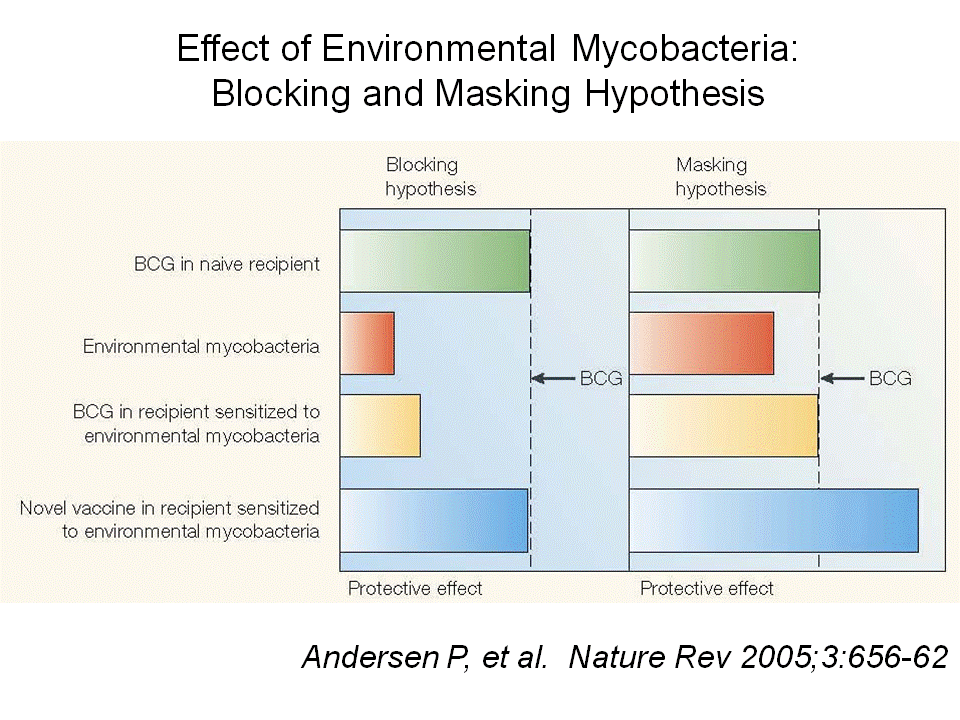 |
|
| |
|
|
| Slide |
132 |
Interventions for Tuberculosis Control and Elimination |
 |
Next |
 |
 |
Previous |
 |
First |
 |
Last |
Peter Andersen and Mark Doherty have extended on the work of Paul Fine and offered an even more disquieting alternative to the "masking hypothesis", which they call the "blocking hypothesis".
Infection with one mycobacterium can provide protection against disease from another mycobacterium and the closer they are related, the better the protection. That environmental mycobacteria do provide protection, albeit to a lesser extent than BCG, has been amply demonstrated.
The blocking hypothesis brought forth by Andersen and Doherty suggests that if the first encounter with a mycobacterium is an environmental mycobacterium this will activate the immune system to respond to an infection with a second mycobacterium. If the second one is BCG with virtually no virulence, its multiplication is swiftly stopped and BCG is eliminated from the host. BCG must, however, be allowed to disseminate to induce protective immunity against the more virulent tubercle bacilli, but because this dissemination is blocked as a result of an immune response from a prior infection with an environmental mycobacterium, a stronger immunological response from BCG cannot be produced. If the host becomes subsequently infected with the more virulent M tuberculosis, the immune response induced by the environmental mycobacterium is insufficent to prevent its multiplication and infection may progress to tuberculosis despite prior BCG vaccination.
The consequences for vaccine development are rather different depending on the hypothesis! |
| |
|
Go to top
Last update:
September 29, 2010